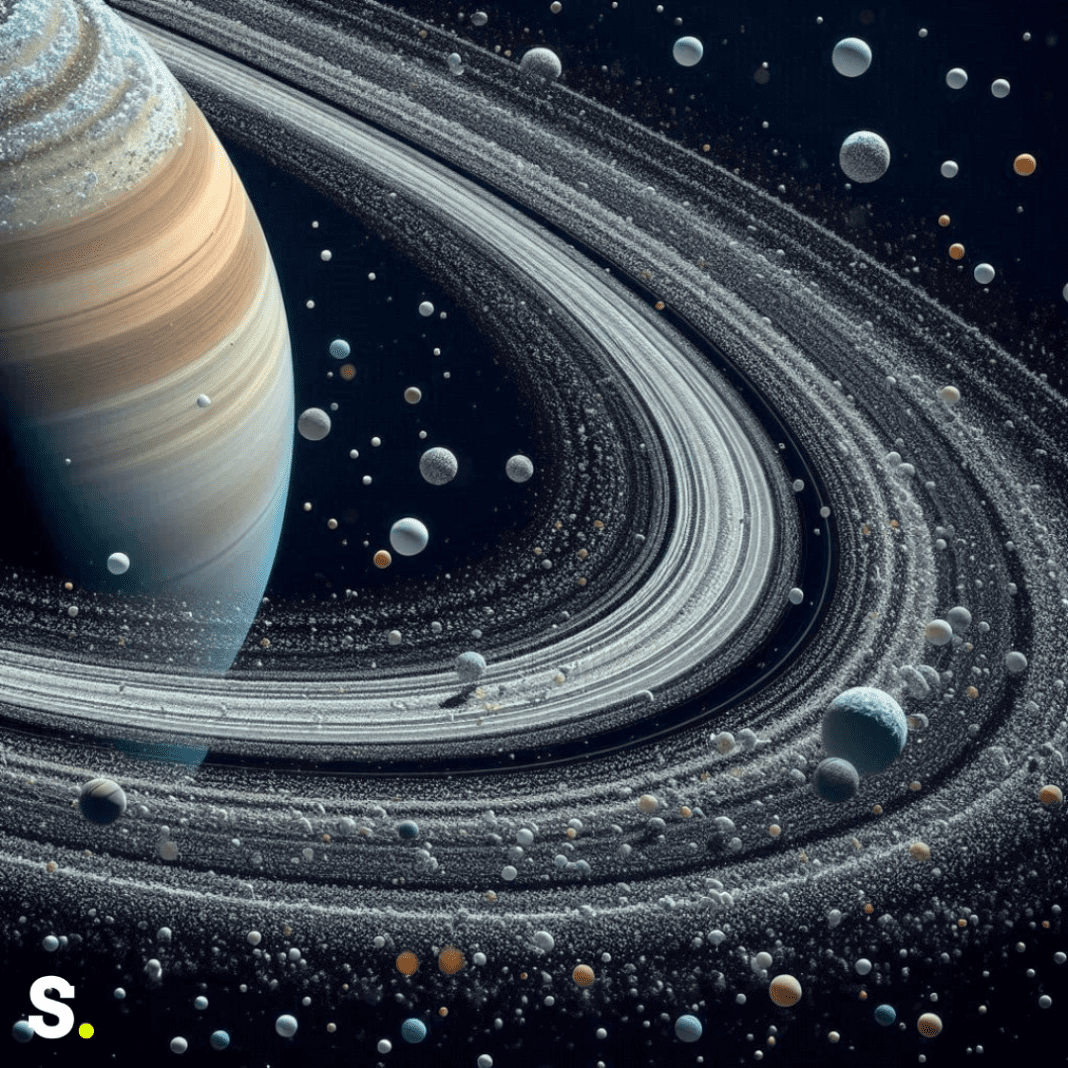Saturn, the sixth planet from the Sun, stands out in our solar system due to its mesmerizing rings. These rings, which stretch an astonishing 400,000 kilometers wide, have captured the imagination of scientists and space enthusiasts alike for centuries. Despite their size, Saturn’s rings are incredibly thin, measuring only about 100 meters in thickness. What makes them even more fascinating is that they are not solid structures. Instead, they consist of countless particles, ranging from tiny specks of dust to enormous ice “snowballs” as big as buses.
For years, these rings have been the subject of numerous space missions. NASA has sent four robotic spacecraft to study Saturn and its rings: Pioneer 11, Voyager 1, Voyager 2, and Cassini. Each of these missions has provided us with new insights into this celestial wonder. The Cassini spacecraft, in particular, played a crucial role in expanding our understanding of Saturn and its rings.
The Mystery of Saturn’s Rings
Saturn’s rings, once thought to be solid bands, are actually composed of an immense collection of ice and rock particles. These particles vary in size, with some as small as grains of sand and others as large as houses. The rings are divided into several sections, with the most prominent being the A, B, and C rings. Each of these sections is separated by gaps, some of which are created by the gravitational influence of Saturn’s moons.
Cassini’s mission, which lasted from 2004 to 2017, revealed that Saturn’s ring system is far more complex than previously imagined. The spacecraft discovered between 500 to 1,000 individual rings, each separated by mysterious gaps. The reasons behind these gaps are still not fully understood, but they may be influenced by the gravitational pull of Saturn’s many moons or by interactions between the ring particles themselves.
One of Cassini’s most significant achievements was sending the Huygens probe to Saturn’s largest moon, Titan. The probe’s historic landing provided valuable data and images, helping scientists learn more about this enigmatic moon. While Titan itself is not directly connected to Saturn’s rings, the mission’s success underscored the importance of studying Saturn and its moons to unlock the secrets of the entire system.
Cassini’s Groundbreaking Discoveries
Over the course of its 13-year mission, Cassini made a number of significant findings on Saturn’s rings. The spacecraft observed that the rings are primarily composed of water ice, with traces of other materials like rock and dust. This composition is believed to be a key factor in the rings’ bright appearance, as ice reflects sunlight very effectively.
Cassini also found that the rings are constantly evolving. Some particles collide and merge, forming larger clumps, while others are torn apart by the planet’s gravity. This dynamic process means that Saturn’s rings are always changing, making them a subject of continuous study and fascination.
In September 2017, Cassini’s mission came to an end when the spacecraft was deliberately plunged into Saturn’s atmosphere. This final act ensured that the spacecraft would not accidentally contaminate any of Saturn’s moons, which could potentially harbor life. Even after its mission concluded, scientists continue to analyze the vast amount of data collected by Cassini, with the hope of uncovering more about Saturn and its rings.
The Disappearance of Saturn’s Rings
One surprising fact about Saturn’s rings is that they won’t always be visible from Earth. In March 2025, the rings will appear to disappear. This phenomenon occurs because of Saturn’s rotation on its axis. As the planet rotates, the rings will become edge-on when viewed from Earth, making them nearly invisible to us. This event has been confirmed by NASA and will be a significant moment for astronomers and skywatchers.
Saturn’s rings, which have fascinated humanity for centuries, will temporarily vanish from view. This disappearance is not permanent, and the rings will become visible again after a period of time. However, the event serves as a reminder of the ever-changing nature of our solar system and the importance of studying these celestial wonders while we can.
Saturn, with its breathtaking rings, continues to be a source of wonder and mystery. The ongoing research and discoveries about this giant planet and its rings not only enhance our understanding of the solar system but also captivate the imagination of people around the world. The beauty and complexity of Saturn’s rings are a testament to the incredible diversity and dynamism of our solar system.




